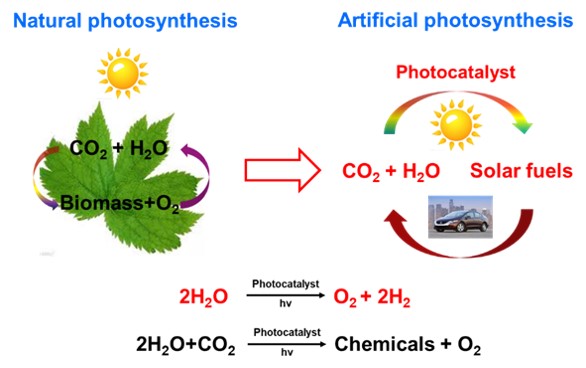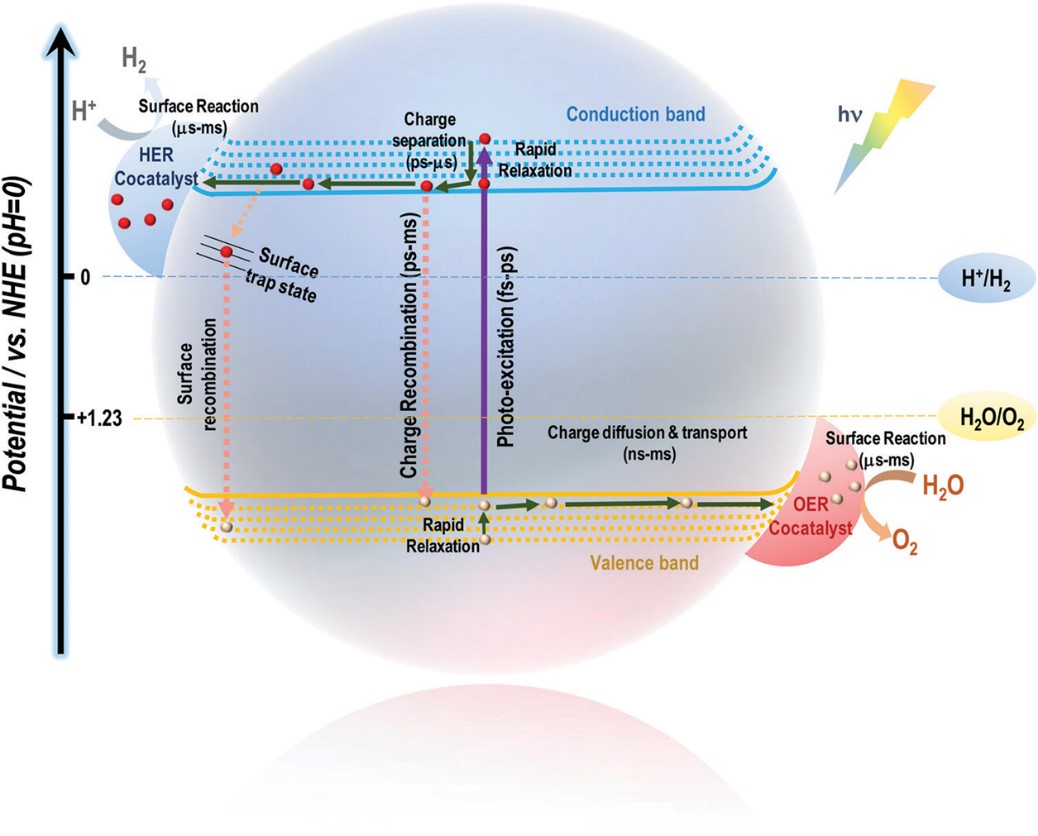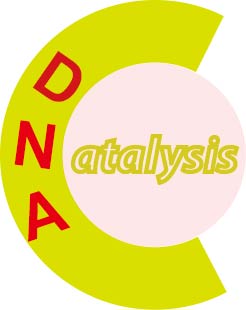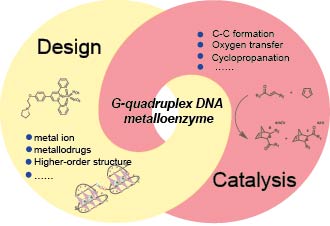
人工光合成基础科学中心
国家自然科学基金委人工光合成基础科学中心成立于2020年,依托中国科学院大连化学物理研究所成立,中国科学院理化技术研究所和大连理工大学作为项目合作单位共同参与。基础科学中心项目是基金委支持力度最大的项目,旨在集中和整合国内优势科研资源,瞄准国际科学前沿,超前部署,着力推动学科深度交叉融合,抢占国际科学发展的制高点,形成若干具有重要国际影响的学术高地。
人工光合成是国际科学领域的大科学课题,是利用太阳能将二氧化碳和水转化为太阳燃料的过程,太阳燃料合成有望逐步发展成为对传统能源的颠覆性技术,可以从根本上变革能源和化工领域过度依赖化石资源的现状,有望解决人类目前面临的三大问题:能源安全、环境保护以及经济和生态可持续发展。人工光合成的另一个兴起的重要方向是合成生物学,道法自然,利用人工光合成过程合成糖、蛋白质和核酸等生命基本需要的物质,将是更为挑战的基础科学难题。
人工光合成基础科学中心聚焦人工光合成的前沿科学问题,重点围绕人工光合成的“光反应”和“暗反应”中的关键基础科学难题与技术挑战,发展光(电)催化理论与实验方法、研发宽光谱捕光材料及高效稳定催化剂新体系、发展光生电荷分离新策略及时空分辨的光生电荷表征新技术,在关键基础科学问题深入认识的基础上,构筑集成人工光合成体系,实现高效光催化分解水制氢、二氧化碳转化合成太阳燃料、室温固氮合成氨及氨基酸等人工光合成反应过程,为实现人工合成太阳燃料、化学品及生物化合物奠定科学基础,引领人工光合成领域的发展。

Fundamental Research Center of Artificial Photosynthesis
Fundamental Research Center of Artificial Photosynthesis (FReCAP) of the National Natural Science Foundation (NSFC) was established in 2020 in Dalian Institute of Chemical Physics, Chinese Academy of Sciences. FReCAP aims to find new and effective ways to produce solar fuels using sunlight, water, and carbon dioxide. FReCAP is led by a team from Dalian Institute of Chemical Physics (DICP), Dalian University of Technology (DTU), and Technical Institute of Physics and Chemistry (TIPC). FReCAP is the NSFC’s largest research program dedicated to the advancement of solar fuels generation science and technology.
Artificial photosynthesis harvests solar energy, the largest available resource among renewables, and stores it in chemical bonds to produce renewable solar fuels from carbon dioxide and water. Solar fuel production is expected to fundamentally change the current situation of excessive use on fossil resources, aiming to solve the problems including energy security, environment pollution, and ecological sustainable development. FReCAP concentrates on the frontier scientific issues of artificial photosynthesis, focuses on the key basic scientific problems and technical challenges in the "light reaction" and "dark reaction" of artificial photosynthesis, develops novel theory and experimental methods of photocatalysis, explores new system of wide-spectrum light-capture materials and high-efficiency stable catalysts, develops new strategy of photo-generated charge separation and spatial-temporal resolved photogenerated charge characterization technology. On the basis of in-depth understanding of key basic scientific issues, FReCAP aims to build series of integrated artificial photosynthesis systems to realize the efficient water splitting to produce hydrogen, carbon dioxide conversion to solar fuel, nitrogen fixation to synthesize ammonia and amino acids and other artificial photosynthesis reaction processes. FReCAP will lay a scientific foundation for the realization of artificial photocatalysis from fundamental research to scalable applications, and lead the international scientific frontier in the field of artificial photosynthesis.
太阳能光催化小组
清洁能源、生态保护以及绿色可持续发展已成为国际社会的共识,发展清洁可再生能源迫在眉睫。太阳能作为地球“能源之母”,具有清洁、丰富、可再生等优点,它的高效转化与利用是解决能源与生态问题的理想途径。通过人工光合成分解水制氢是太阳能利用的最有效途径之一,是国际上科学领域的圣杯式挑战课题,受到世界各国的高度重视。氢气作为一种能源载体,具有能量密度高、清洁无污染等优点,不仅可以直接用作燃料替代短缺的化石能源,还可以作为工业原料合成甲醇、氨气等工业化学品,受到工业界和社会的广泛关注。太阳能光催化分解水制氢是一个涉及材料、化学、物理等多学科交叉的前沿性课题,具有重大的科学挑战性和工业应用前景。

光催化分解水是一个涉及多电子转移的能量爬坡反应,总吉布斯自由能为237 kJ/mol,整个过程是由三个在时间尺度上跨度多个数量级的过程共同构成:光吸收产生光生电子空穴对,光生电荷分离以及表面催化反应生成氢气与氧气。总太阳能利用效率由光吸收效率、电荷分离效率以及表面催化反应效率的乘积共同决定,任何一个过程受阻都会影响到光催化分解水的效率,这也是光催化分解水反应非常挑战的原因。

本研究组围绕太阳能-化学能转化利用的三大关键科学问题(光吸收、电荷分离、表面催化反应),聚焦于半导体微纳光电材料开发以及光电性质设计并可控组装集成人工光合成体系,用于实现高效太阳能光-化学转化。
具体研究内容如下:
(1)新型光(电)催化材料的开发。从半导体光(电)催化材料的设计合成及光电性质调控入手,实现对半导体光催化剂能带结构、晶体结构等性质的精确调控,建立系列具有良好光吸收和高电荷分离效率的太阳能转化利用材料体系,用于人工光合成研究。
(2)光生电荷分离策略和集成体系的设计与构筑。设计并实现对半导体光催化剂的暴露晶面调控、形貌对称性调控、内建电场调控等策略以提升其本征光生电荷分离效率,进而利用空间电荷分离性质合理构筑氧化还原位点空间分离的集成人工光合成体系,实现高效太阳能分解水制氢。
(3)助催化剂的可控设计与构筑。高效助催化剂的设计与开发;助催化剂的可控构筑方法;基于对助催化剂沉积位点、助催化剂尺寸效应等因素的系统研究,建立助催化剂相关理论,系统认识人工光合成研究中助催化剂的重要作用和微观机制。
(4)可规模化太阳能光催化分解水制氢研究。探索开发可规模化的粉末光催化剂体系太阳能制氢策略,从源头解决氢气和氧气的分离以及二者的逆反应问题,建立太阳能光催化分解水规模化应用示范,为未来大规模太阳能制氢提供新的可行技术路线。

Photocatalysis
Clean energy, ecological protection and green sustainable development have become the consensus of the international community, and the development of clean and renewable energy is imminent. As the ‘mother of energy’ of the earth, solar energy has the advantages of cleanness, abundance, and regeneration. The efficient conversion and utilization of solar energy is an ideal way to solve energy and ecological problems. Hydrogen production from water splitting through artificial photosynthesis is one of the most effective ways to utilize solar energy, which is a holy grail challenge in the international scientific field and has been highly valued by countries all over the world. As an energy carrier, hydrogen has the advantages of high energy density, clean and pollution-free. It can not only be directly used as fuel to replace the fossil energy in short supply, but also can be used as industrial raw material to synthesize industrial chemicals such as methanol and ammonia, which has received widespread attention from industry and society. Hydrogen production by photocatalytic water splitting is a leading-edge field involving materials, chemistry, physics and other interdisciplinary subjects, which has great scientific challenges and industrial application prospects.
Photocatalytic water splitting is an energetically uphill reaction involving multi-electron transfer with a Gibbs free energy change of 237 kJ mol-1. The whole photocatalytic reaction is composed of three processes spanning multiple orders of magnitude on the time scale: light harvesting to produce photogenerated electron-hole pairs, photogenerated charge separation, and surface catalytic reactions to generate hydrogen and oxygen. The total solar energy utilization efficiency is determined by the light absorption efficiency, charge separation efficiency and surface catalytic reaction efficiency. If any process is blocked, the efficiency of solar energy utilization will be affected, which is also the reason why photocatalytic water splitting is very challenging.
Based on the three key scientific issues of solar-chemical energy conversion and utilization, our research group focuses on the development of semiconductor micro-nanomaterials, the modulation of photoelectric properties and the controllable assembly and integration of artificial photosynthesis system for the realization of efficient solar-chemical energy conversion.
The specific research contents are as follows:
(1) The development of novel photocatalytic materials. Starting with the design and synthesis of semiconductor photocatalytic materials and the modulation of photoelectric properties to realize the precise regulation of band structure and crystal structure of photocatalyst, and establish a series of solar energy conversion and utilization material systems with excellent light absorption and high charge separation efficiency for the research of artificial photosynthesis
(2) Design and construction of photogenerated charge separation strategy and integrated system. To improve the intrinsic photogenerated charge separation efficiency of semiconductor photocatalyst by adjusting the exposed crystal facet, morphology symmetry and internal electric field, and then construct an integrated artificial photosynthesis system with oxidation and reduction sites of spatial separation by using the property of spatial charge separation, so as to realize the efficient solar water splitting and hydrogen production.
(3) Controllable design and construction of cocatalyst. Design and development of high efficiency cocatalyst and controllable construction method of cocatalyst; Based on the systematic study of the factors such as the deposition site and the size effect of cocatalyst, to establish the theory of the cocatalyst and systematically understand the important role and microscopic mechanism of the cocatalyst in the study of artificial photosynthesis.
(4) Scalable solar hydrogen production by photocatalytic water splitting. To explore and develop a large-scale solar hydrogen production strategy using powder photocatalyst system, solve the problem of separation of hydrogen and oxygen and the reverse reaction between them from the source, establish scalable application demonstration of solar photocatalytic water splitting, and provide a new feasible technical route for large-scale solar hydrogen production in the future.
太阳能光电催化
太阳能光电催化是人工光合成的一个重要策略,也是重要的太阳能转化平台。光电催化体系中,电极-溶液界面促进电荷分离和表面反应;可模拟自然光合作用Z机制和光反应暗反应分离的特点,实现氧化和还原反应的空间分离,避免了逆反应,并可通过外加偏压促进反应。该领域的关键问题在于如何促进光电极高效捕光、光生电荷分离及传输、表面催化反应动力学等。
我组重点开展光电催化分解水制氢、光电催化制备双氧水、光电催化降解污染物、光电催化CO2还原等多方面研究。
近年来,在光电催化高效光电极构建、电荷分离及转移策略和机制等方面取得重要进展。创新提出空穴储存层(Angew. Chem. In. Ed. 2014, 53, 7295)、仿生界面(J. Am. Chem. Soc. 2018, 140, 9, 3250)、仿生Z机制(J. Am. Chem. Soc. 2021, 143, 32, 12499)等电荷分离策略策略,提出双配体调控铬酸铅生长及缺陷态策略(Adv. Mater. 2022, 34, 2110610),揭示了助催化剂(ACS Catal. 2023, 13, 4, 2647)、界面功能层(ACS Catal. 2023, 13, 4, 2647)、界面态能级(J. Am. Chem. Soc., 2016, 138 (41), 13664; J. Am. Chem. Soc. 2022, 144, 17540)等对光电催化性能的影响机制,创造了氮化钽光阳极2.5% (Energy Environ. Sci. 2016, 9, 1327)、本体异质结光阴极4.1%(Adv. Funct. Mater. 2020, 2003399)、双光电极无偏压体系4.3%(J. Am. Chem. Soc. 2021, 143, 32, 12499)等多项光电催化太阳能-氢能转化效率的记录,并构建了高效光电催化氧还原制备双氧水体系(Energy Environ. Sci. 2020, 13, 238)、光充电液流电池(Nano Energy, 2020, 104907; Nat. Commun. 2016, 11474)等。

Photoelectrocatalysis
Photoelectrocatalysis is an important strategy for artificial photosynthesis and is a platform for solar energy conversion. In a photoelectrocatalytic (PEC) system, charge seperation and surface reaction can be promoted by the electrode-electrolyte interface. It can mimic the Z-scheme principle and sperated light- and dark- reactions in nature photosynthesis, achieving the separation of oxidation and reduction reactions and avioding reverse reaction. In addition, an external bias can be applied to promote the PEC reaction. The critical issues of this area lie in how to promote light absorption, charge seperation and transfer, and surface catalytic reactions.
Our group focuses on PEC water spliting for hydrogen production, PEC oxygen reduction or water oxidation for H2O2 production, degradation of fluorinated pollutants and CO2 reduction, etc. In these years, we have made important progress in the construction of efficient photoelectrodes, charge seperation and tranfer strategies and mechanisms. We proposed charge seperation strategies like hole strorage layer (Angew. Chem. In. Ed. 2014, 53, 7295), biomimetic interface (J. Am. Chem. Soc. 2018, 140, 9, 3250), biomimetic Z-scheme (J. Am. Chem. Soc. 2021, 143, 32, 12499), and a dual-ligand strategy to regulate the growth and deffects of lead chromate photoanodes (Adv. Mater. 2022, 34, 2110610). The effects of coccatalysts (ACS Catal. 2017, 7, 675), interfacial layers (ACS Catal. 2023, 13, 4, 2647), interfacial energetics (J. Am. Chem. Soc. 2016, 138 (41), 13664; J. Am. Chem. Soc. 2022, 144, 17540) in PEC systems have been revealed. And several solar-to-hydrogen efficiency records have be achieved for PEC water splitting with a Ta3N5 photoanode (2.5%, Energy Environ. Sci. 2016, 9, 1327) , bulk heterojunction photocathode (4.1%, Adv. Funct. Mater. 2020, 2003399) and bias-free dual-photoelectrode system (4.3%, J. Am. Chem. Soc. 2021, 143, 32, 12499). In addition, efficient PEC systems for hydrogen peroxide synthesis (Energy Environ. Sci. 2020, 13, 238) and solar rechargeable flow cells (Nano Energy, 2020, 104907; Nat. Commun. 2016, 11474) have been constructed.
太阳电池
随着化石能源的逐渐枯竭和环境保护问题的日益加剧,寻找清洁的可再生能源成为世界各国的主要目标。太阳能作为一种可再生能源,具有洁净、易获取、取之不尽、用之不竭的特点,合理开发和利用太阳能对我国能源安全、生态文明建设以及经济可持续发展等具有重要的战略意义。太阳电池,也称光伏电池,可使太阳能直接转化为电能,是有效利用太阳能、取代传统化石能源的理想候选之一。太阳电池小组隶属于中科院大连化物所洁净能源国家实验室太阳能研究部,主要从事有机光电材料开发与器件制备方面的研究,着重关注有机半导体材料在新型太阳电池(有机太阳电池、钙钛矿太阳电池)中的应用,致力于实现高效、稳定、低成本的太阳电池技术。
研究组以有机合成技术为手段,以开发有机半导体材料为核心,以提高光伏器件性能为目标,主要开展有机太阳电池和钙钛矿太阳电池两方面的研究工作,同时关注新型有机半导体材料在其他方面的应用潜力,以及光伏-储能一体化器件研究。基于钙钛矿材料特性,探索其本征铁电、热电性质并将其用于钙钛矿太阳电池,同时开展大面积器件的探索工作。根据无铅(类)钙钛矿材料的物理化学特性,探索材料在光伏发电、LED发光、光电探测器等领域的应用,拓展该类材料在光电领域中的应用范围。研究组建成了具有优秀实验条件和科研环境的有机合成实验室及太阳电池制备与表征实验室,已成为具有国际水平的新型太阳电池科研工作平台。
Solar Cells
Solar energy is clean, renewable, and inexhaustible. It is particularly significant for the sustainable development around the world to reasonably and effectively utilize the solar energy. One of major ways for such utilizations is the solar-to-electricity conversion, which relies upon the photovoltaic technology or the solar cells. With an aim to realize highly efficient, stable, and low-cost solar cells, the Group of Solar Cells, affiliated to the Dalian National Laboratory for Clean Energy, Dalian Institute of Chemical Physics, Chinese Academy of Sciences, are conducting research focusing on the design and synthesis of novel organic semiconducting materials and their applications in organic solar cells (OSCs) and perovskite solar cells (PSCs).
Our group makes use of synthetic skills to develop organic, polymer, and organic/inorganic hybrid materials for applications in OSCs, PSCs, as well as integrated photovoltaic- energy storage devices. Based on the material properties of perovskite materials, we also explore their intrinsic ferroelectric and thermoelectric properties to improve the photoelectric conversion efficiency of solar cells. According to the physical and chemical properties of perovskite materials, the applications of the materials in photovoltaics, LEDs, photodetectors and their large-area devices are explored. Labs for both organic synthesis and device fabrication/characterization have been established, providing excellent conditions and environments for conducting scientific research.
手性催化与生物催化
1.仿生手性催化反应体系的设计
模仿生物催化体系的催化原理,设计高效的手性催化剂,发展新的不对成催化反应。

2. 人工光合成研究
糖类、脂肪酸、氨基酸和蛋白质是人类生存所必须的基础营养物质,开发基于人工光合成的清洁能源驱动的大宗营养物质高效制备技术,集成人工和生命体系各自优势,不仅在“双碳”时代具有鲜明的应用背景,也将为人类探索广阔宇宙提供技术支撑。通过系统分析生命系统中糖类、脂肪酸、氨基酸和蛋白质合成过程的瓶颈并以创新的人工技术加以替代,实现人工与生物过程的紧密耦合,引领绿色制造技术发展。
耦合人工光反应-生物暗反应催化,利用太阳能等可再生能源,二氧化碳和水为原料,合成手性乳酸、氨基酸和糖类等生物基化学品。

3. 光(电)催化的二氧化碳参与有机合成反应研究
设计合成无机-有机杂化光(电)催化剂并将其应用二氧化碳参与有机反应体系,合成药物和有用的精细化学品。
4.发现和认识DNA相关的催化或化学功能,致力于将这种功能和生物过程相关联
(i)非B型DNA结构的研究及其催化功能探索;
(ii)DNA的化学行为和生物代谢过程的耦合研究;
(iii)DNA金属酶的设计及其生物检测应用。


Chiral catalysis and biocatalysis
1. The design of biomimetic asymmetric reaction systems.
2. The design of artificial photosynthetic system for production of biochemicals from CO2, water and solar energy.
Carbohydrates, fatty acids, amino acids and proteins are essential nutrients for human beings. Basing on the “liquid solar fuels” technologies, highly efficient production of above chemicals with the combination of both artificial and biological processes driven by green energies are requirements of “the carbon peaking and carbon neutrality goals”, as well as the supports to the expedition of the cosmos. With the systematic analysis of the bottlenecks in the metabolism, novel artificial processes are developed and deployed to construct the hybrid systems with high overall efficiency, which leading the progress of the green manufacture of above chemicals.
3. The development of Organic-inorganic hybrid photocatalysts or electrocatalysts on organic reactions.
4. Understanding the essential role of DNA in the biological process from the perspective of catalysis.
(i) Non-B family DNA: structure and potential catalytic function;
(ii) Chemical behavior of DNA in metabolic process;
(iii) DNA metalloenzyme:design, catalysis and detection application.